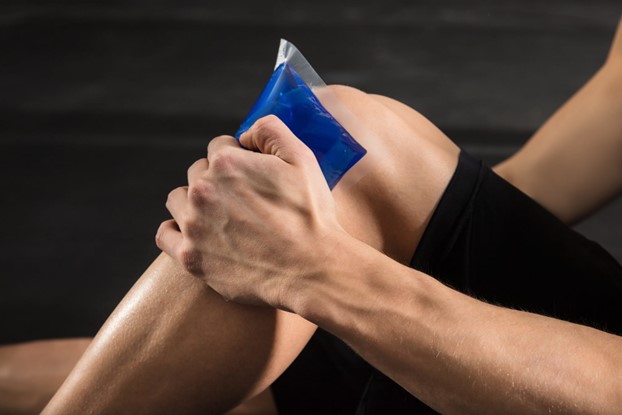A nurse is caring for a client following a total knee arthroplasty. The client reports a pain level of 6 on a pain scale of 0 to 10.
Which of the following interventions should the nurse take?
Place pillows under the client's knee.
Perform range-of-motion exercises on the client's knee.
Apply an ice pack to the client's knee.
Gently massage the area around the client's incision.
The Correct Answer is C

Applying an ice pack can help reduce pain and swelling after total knee arthroplasty.
Placing pillows under the client’s knee (choice A) is not recommended as it can hinder circulation and delay healing.
Performing range-of-motion exercises to the client’s knee (choice B) may be part of the rehabilitation process but should be done under the guidance of a physical therapist and may not be appropriate for immediate pain relief.
Gently massaging the area around the client’s incision (choice D) may not be appropriate as it can cause discomfort and disrupt the healing process.
Nursing Test Bank
Naxlex Comprehensive Predictor Exams
Related Questions
Correct Answer is B
Explanation
A client reports having a fever, night sweats, and cough for 2 days.
These symptoms are associated with infectious diseases such as tuberculosis.
In order to prevent the spread of infection to other patients, this client would require a private room.
A client with diabetes mellitus and acute ketoacidosis does not require a private room based on their diagnosis.
C)A client with a compound fracture of the right femur does not require a private room based on their diagnosis.
D)An older adult client with aspiration pneumonia does not require a private room based on their diagnosis.
Correct Answer is A
Explanation
Place two-bed pillows between the legs when in bed.
To prevent hip dislocation after total hip arthroplasty, the nurse should place two-bed pillows between the client’s legs when in bed.
This helps maintain proper alignment and prevent the hip from dislocating.
Choice B is incorrect because leaning forward when attempting to stand can increase the risk of hip dislocation.
Choice C is incorrect because removing the wedge device when turning can increase the risk of hip dislocation.
Choice D is incorrect because elevating the knees higher than the hips when sitting can increase the risk of hip dislocation.
Whether you are a student looking to ace your exams or a practicing nurse seeking to enhance your expertise , our nursing education contents will empower you with the confidence and competence to make a difference in the lives of patients and become a respected leader in the healthcare field.
Visit Naxlex, invest in your future and unlock endless possibilities with our unparalleled nursing education contents today
Report Wrong Answer on the Current Question
Do you disagree with the answer? If yes, what is your expected answer? Explain.
Kindly be descriptive with the issue you are facing.
